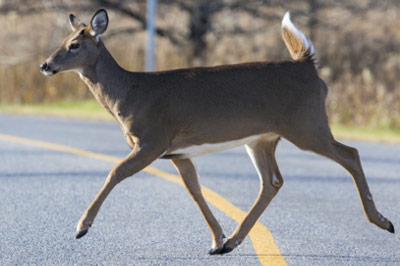40% of deer collisions occur October through December. You can reduce deer collisions within your organization by following these best practices.
Subscribe to our newsletter for timely content in your inbox

Each year there are approximately 1.8 million vehicle-animal collisions reported, primarily deer. The frequency of collisions rises sharply during the months of October, November and December with November having nearly three times the number as the average month.1 This time of year results in more accidents due to:
While severe injuries or death are infrequent in vehicle-deer collisions, vehicle damage can be extensive. In 2018 the average deer collision insurance claim was $3,172.1 Claim expense continues to rise as new technology is added to car front ends, such as high-tech headlights and collision avoidance systems. These features typically take longer to repair, keeping your vehicle off the road longer.
Organizations should consider the following best practices to limit deer collisions and their severity:
[1] Losses Due to Animal Strikes, Highway Loss Data Institute Volume 36, No. 4 May 2019
[2] Williams, A.F. and Wells, J.K. 2005. Characteristics of vehicle-animal crashes in which vehicle occupants are killed. Traffic Injury Prevention 6:56–59